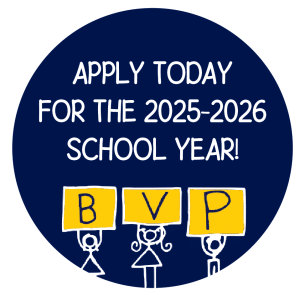By: David Liao, Ph.D.
Asian American and Pacific Islander (AAPI) Heritage Month is observed during the month of May, which falls toward the end of our school year. This is just as well, because it has given me ample time to reflect on my first year at BVP, and to think about my place as an Asian American educator at a school designed to be intentionally diverse. The percentage of scholars at BVP who identify as AAPI is relatively low, and the percentage of faculty not much higher. And yet, even among this not-always-visible minority, I can see a diversity that resonates with BVP’s core values, and represents a wide spectrum of histories and experiences: Chinese, Japanese, Indian, Lao-Thai, Cambodian. Viewed alongside the broader BVP population, what I come to appreciate is that the beauty of this intra-group diversity is something we share with the other groups in our learning community. Just as there are many disparate voices and nationalities within the categories of Latino/a, Black, Indigenous, and White, the AAPI experience contains multitudes, and in the end this is one of the things that truly unites and connects us. To me, the power of BVP’s commitment to diversity is precisely in the opportunity to encounter someone different from yourself and see them in their complex human fullness, which also means recognizing them as the product of multiple unique nations and histories and languages.
In thinking about this commonality, I am also reminded that the very category of AAPI was created in a spirit of solidarity and shared struggle with other peoples of color in the United States. The Asian American movement began in the 1960s, led by students and civic groups fighting for change. In creating and naming this concept of “Asian American,” they brought together previously separated groups to combat a common racial oppression. The first Asian American activists drew inspiration from Black and Latino Civil Rights Movements, and openly resolved to stand with African, Latino, and Native Americans in the fight for racial justice. In fact, interracial alliances between Asians and other groups have a long history in this country. Prominent examples include Frederick Douglass advocating for Chinese and Japanese immigrants, the friendship between Malcolm X and activist Yuri Kochiyama, and more recently, vocal Asian American support for Black Lives Matter. In addition, powerful alliances between Asian and Latino communities have formed around the issues of labor rights and immigration, such as the Filipino-Mexican workers’ strike led jointly by Cesar Chavez and Larry Itliong, or when survivors of Japanese American internment camps protested the detainment and family separation of Latin American migrants at the border.
On a more personal note, this solidarity is something I feel every day at BVP, mentoring and learning from this inspiring and diverse group of scholars. When I first started at BVP back in September, I occasionally wondered how my presence would register to the predominantly black and brown scholars here, many of whose life experiences were so different from my own. I was genuinely curious about what encounters they had, if any, with people who looked like me, beyond the K-Pop idol stickered to the back of a scholar’s phone, or the viral popularity of Squid Game and widespread love of anime. As the year went on, I was excited to discover a world of things we share in common. I have compared notes with many of you about the experience of relocating to a new country, speaking different languages at home, visiting a tropical island homeland, the stressful expectations of immigrant parents, growing up with half-siblings and blended families, and of course the food, always the food. This prompted me to think back to my earliest memories of being in the U.S., and recall that these cross-cultural connections had always been a core part of my experiences. I learned English for the first time in Houston, Texas, among a class full of native Spanish speakers. I vividly remember the boy with the African name who put his arm around me at the end of my first day at school, determined that we would be best friends. There was a movie that I frequently caught on network-TV reruns called The Last Dragon, about an African American martial artist who idolizes Bruce Lee. Goofy yet endlessly rewatchable, this movie later led me to discover an entire history of Black-Asian cultural conversations, from films like Rush Hour and Romeo Must Die to the Wu-Tang Clan’s classic album Enter the Wu-Tang (36 Chambers).
All this is to say, I may have started the year thinking of myself as something of an anomaly among the intentional diversity of BVP. But now that AAPI Heritage Month has rolled around, I have come to appreciate the ways that sharing spaces with and mutually supporting Black, White, Latino and Indigeous fellow travelers has always been central to the Asian American experience. From co-advising GSA meetings to attending Black Student Union events to simply practicing Spanish on Duolingo with my students, I feel at my exuberant best as an educator when I am in the fray alongside all of you, sharing in your struggles and challenges and triumphs. I felt this all the more acutely last week during College Signing Day, watching our seniors declare their first steps into that oft-invoked world beyond. I was caught off guard by a swell of emotion that surpassed anything I experienced at my last job, when I worked exclusively with students that looked like me and shared a common language and cultural heritage. As I stood at the back of the gym, cheering with your teachers and classmates and families, I could see clearly that the world beyond isn’t merely a place we prepare you to enter, but something that we are continually building and shaping together.
Additional Information and Resources:
https://www.thoughtco.com/
https://www.cnn.com/2021/03/
https://projectpulso.org/2021/
David Liao, Ph.D. is a mentor at Blackstone Valley Prep High School.



